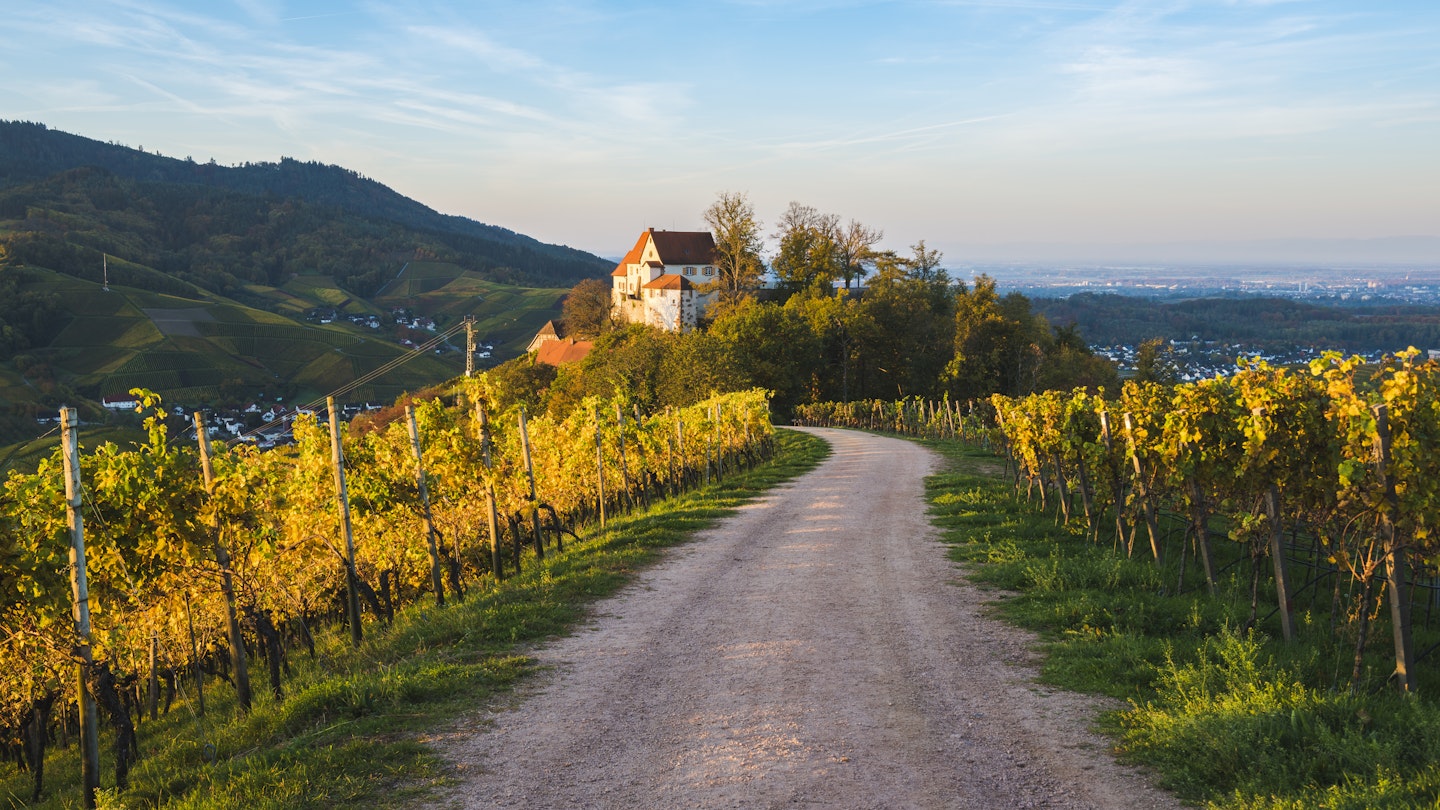Discover German Wine Country with GoTravelDaily
Perched above a fairytale village adorned with blooming flowers, neat hedges, and colorful shutters lies a breathtaking landscape of vineyards. These vineyards blanket angular slopes where one wrong step could send you tumbling down the grape-strewn hillsides. This enchanting scene is straight out of a storybook like “Hansel and Gretel” or Heidi. However, you are in the heart of German wine country, where Riesling is just one of many magnificent grapes available.
In the southwestern wine-growing region of Baden, indulge in a glass of light ruby red Spätburgunder – Germany’s exquisite Pinot Noir. Over the past two decades, this luscious red has surged in popularity, now accounting for over a third of Germany’s wine sales. Consequently, Germany stands as the third-largest Pinot Noir producer globally, trailing only France and the United States.

This shift toward diverse grape varietals is attributed to both a growing domestic demand for Pinot as well as changes influenced by climate change. Shifting weather patterns now allow a myriad of grape varieties to thrive where they previously could not, resulting in delightful rosés and dry sparkling wines. These variations can be found among over 135 different grape varietals thriving throughout 13 German wine regions. Each region is dotted with charming medieval villages, numerous estates, and beautiful castles, ensuring a visit is not to be missed.
Do not expect gimmicky, commercialized wineries pushing souvenirs. Germany’s rustic wineries in Baden and beyond typically do not charge tasting fees. Although purchasing a bottle is encouraged, most prices hover around a modest 8-10 euros. Those unfamiliar with where to start should consider exploring these three lesser-known regions along the Rhine, perfect for savoring wine in a tranquil setting:
Baden Wine Country
Most of Baden’s vineyards are nestled within a 250-mile stretch of land between the Black Forest and the Rhine. Bearing a climate similar to France’s Loire Valley, Baden offers a diverse array of grape styles and flavors due to its varied soil types and microclimates, coupled with centuries-old viticultural traditions.
Weingut Schloss Neuweier
Traveling south from Frankfurt or Stuttgart, visit Weingut Schloss Neuweier in Baden-Baden. Notably, the wine barrels here boast whimsical names like Pura Vida and Eye of the Tiger, reflecting the passion infused in each barrel. Enjoy Grand Cru wines harking back to Queen Victoria’s reign, alongside sparkling wines and even non-alcoholic grape ginger juice, all enjoyed with the stunning backdrop of Neuweier Castle.
Consider spending the night at Hotel Hirschen in Lehen. Dining at Restaurant Hirschen is an experience valued for its exquisite offerings, including beef cheek, lobster soup, and Black Forest ice cream dessert paired with a Rosé or Kirchberg Spätburgunder GG from Weingut Salway, grown in volcanic soil.

Weingut Ziereisen
At Weingut Ziereisen, steep sloping vineyards flourish atop Jurassic limestone, where the winery’s cellar cave is uniquely crafted. Winemaker Hanspeter Ziereisen jovially states, “Work dirty in the cellar with clean grapes.” Guests are welcomed by an innovative overhead sound art installation while savoring German-style focaccia, a treat carried over by Italian railroad workers centuries ago.
With vines that are sixty years old, the Ziereisen family has roots in the village of Efringen-Kirchen since 1734. Admire the engraved oak barrels from this era during your visit. Although you won’t find Riesling here, the Ziereisens experiment with Syrah and cultivate ample Pinot Blanc and Chardonnay. Notably, their local specialties include Spätburgunder and Gutedel, an ancient white grape, maturing up to 24 months in barrel and another 9 months in bottle.
Weingut Schneider
The Schneider brothers, who have familial ties to the area since 1492, create splendid wines at Weingut Schneider. Experience a complex Pinot or Gutedel before ascending into the vineyards to witness breathtaking sunsets over Switzerland and France. Jeep rides and picnic lunches amidst the vines can also be arranged near the vineyard’s open-air cottage.
Württemberg
In this rural, hilly region adjacent to Baden, red wine takes prominence, notably the crisp and light Trollinger, cultivated almost exclusively in Württemberg. Fuller-bodied regional reds include Schwarzriesling (Pinot Meunier), Lemberger, and Spätburgunder, while Riesling remains the leading white variety. Most vineyards here supply their grapes to around fifty cooperatives, which account for about 80% of the region’s wines.
Weingut Dautel
For five centuries, the Dautel family has cultivated grapes at Weingut Dautel, where intuitive winemaking leads to exceptional wines. Nestled alongside the Ahr and Neckar Rivers, the region’s steep 70-degree slopes allow the creation of sparkling wines, Steingrubens (Pinot Noir), and Weissburgunders that are truly remarkable.
Bensheim
Savor a traditional lunch at Restaurant Alte Dorfmühle Auerbach in Bensheim, located conveniently from cities like Heidelberg and Frankfurt. Indulge in delightful schnitzel, pork steak, and homemade sausages accompanied by local wines from Weingut Hanno Rothweiler or Weingut Simon Bürkel that echo the region’s charm.
Pfalz
The Pfalz region, bathed in sunlight and characterized by its red and yellow sandstone soils, produces exceptional Rieslings. In this picturesque area, vineyards bask in milky light, nurturing figs, almond blossoms, and chestnuts, revealing the historical connection of the Romans with their vines.
Weingut Klundt
Pfalz stands as Germany’s fastest-growing wine region, second in overall acreage only to Mosel. While varieties of Riesling abound, other white grapes also thrive, and the rise of red wines is palpable at Weingut Klundt. Young, ambitious winemaker Sven Klundt emphasizes sustainable practices, allowing visitors to indulge in traditional Rieslings, sparkling Extra Brut, or Pinot Noir Obsession.
Weingut Weegmüller
Family-operated since 1685, Weingut Weegmüller stands amid Baroque architecture established in the 1730s, where white asparagus, grapes, and exotic fruits flourish. Visitors can indulge in juicy Rieslings, Pinot Gris, or Gewürztraminer while exploring the picturesque vineyards adorned with historical hilltop castles.
“Good wine comes from the vineyard. You can have some influence in the cellar,” states the winemaker manager at Wachtenburg Winzer eG, a cooperative with over 100 wines available in their modern tasting room, offering a fantastic selection of dry Rieslings, rosés, sparkling wines, and Pinot Noirs at affordable prices.





